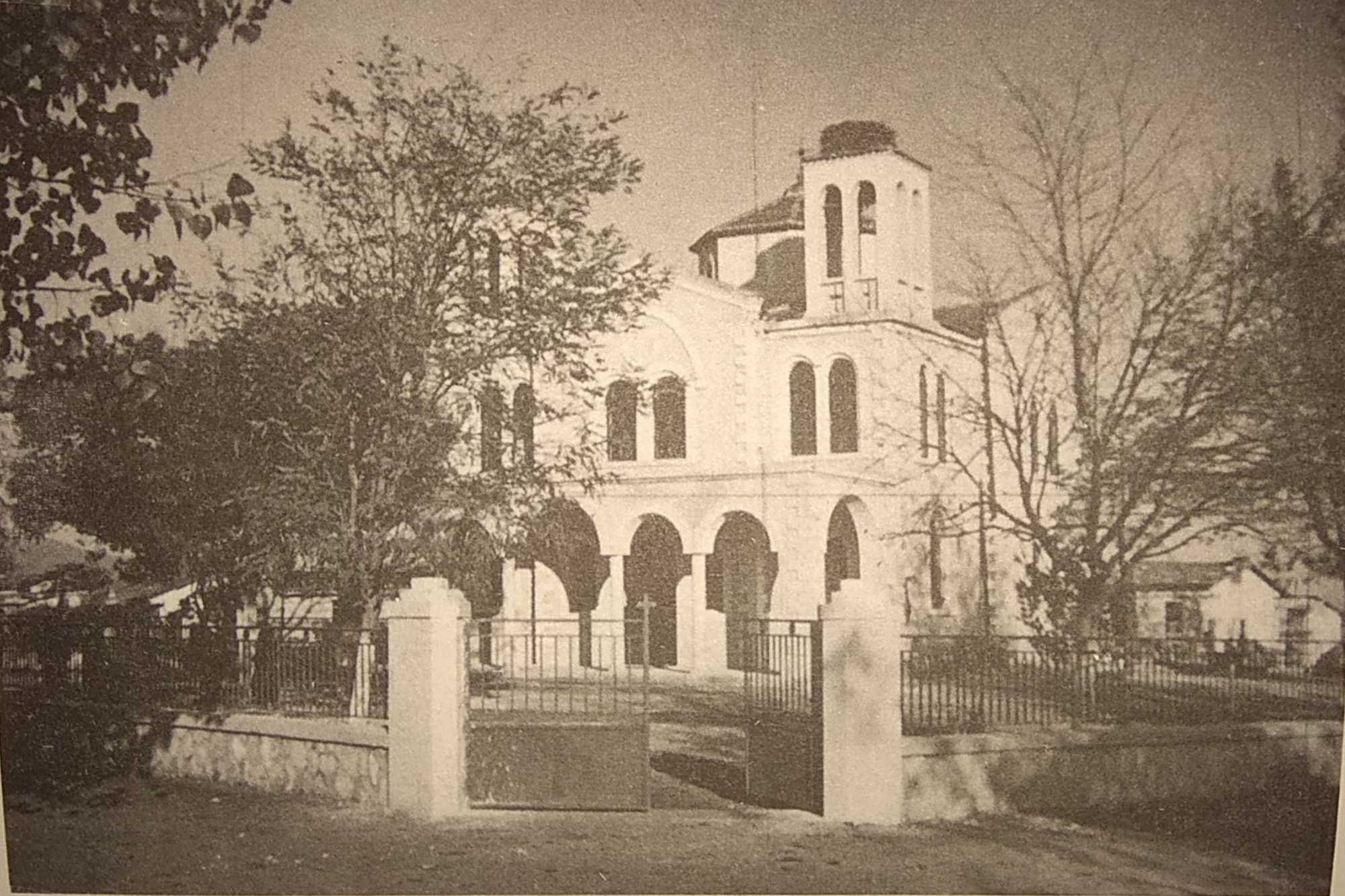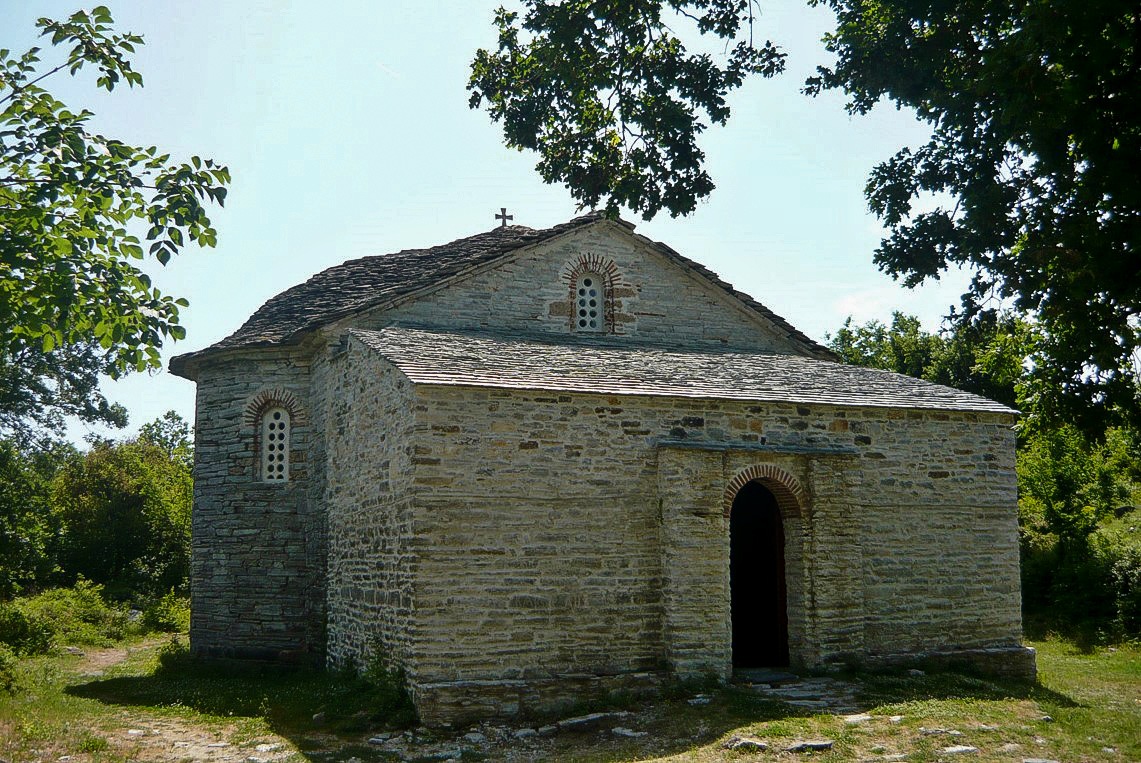Asprovalta on:
[Wikipedia]
[Google]
[Amazon]
Asprovalta (, ''Asproválta'') is a town in the regional unit of
> and <<''Βαρβάρα/Varvára''>>. People who board on the first one went straight to
 Agios Georgios church (St George)
The church was built in the middle of the 16th century and follows the monastic architecture of Macedonia during the Ottoman rule, which does not differ in design and function from that of the Byzantine era. The architectural type that dominates is the so-called Athonite, cruciform inscribed, which has as its main feature the side niches part intended for the dances of the psalters, and the large narthex, the litti. The central area is covered with a large cross-section of excellent construction.
Agios Georgios church (St George)
The church was built in the middle of the 16th century and follows the monastic architecture of Macedonia during the Ottoman rule, which does not differ in design and function from that of the Byzantine era. The architectural type that dominates is the so-called Athonite, cruciform inscribed, which has as its main feature the side niches part intended for the dances of the psalters, and the large narthex, the litti. The central area is covered with a large cross-section of excellent construction.

Thessaloniki
Thessaloniki (; ), also known as Thessalonica (), Saloniki, Salonika, or Salonica (), is the second-largest city in Greece (with slightly over one million inhabitants in its Thessaloniki metropolitan area, metropolitan area) and the capital cit ...
in northern Greece
Greece, officially the Hellenic Republic, is a country in Southeast Europe. Located on the southern tip of the Balkan peninsula, it shares land borders with Albania to the northwest, North Macedonia and Bulgaria to the north, and Turkey to th ...
. It was the seat of the Agios Georgios municipality. Since the implementation of the Kallikratis Plan in January 2011, Asprovalta belongs to the Municipality of Volvi.
History
Near the modern town, the ruins of a Roman station of the Via Egnatia are preserved, which was called Pennana. According to a manuscript of Simonopetra monastery inMount Athos
Mount Athos (; ) is a mountain on the Athos peninsula in northeastern Greece directly on the Aegean Sea. It is an important center of Eastern Orthodoxy, Eastern Orthodox monasticism.
The mountain and most of the Athos peninsula are governed ...
, Asprovalta was built in the 16th century. Its first name was Aspra Valta. After the Asia Minor Disaster, 54 families from Erenköy of Troas (near the ancient city of Ophryneion) were forcibly settled in Asprovalta. Erenköy was located in an important geographical position from a military point of view. During WW1, a Turkish artillery unit was stationed near the village, which was bombarded by the Allied ships. The truce of Moudros (30 October 1918) marked the end of the war.
The settlement of Asia Minor refugees in Greece was one of the most important events of modern Greek history. Residents of Erenköy (most of them) were resettled in rural and urban settlements all over Greece: Athens
Athens ( ) is the Capital city, capital and List of cities and towns in Greece, largest city of Greece. A significant coastal urban area in the Mediterranean, Athens is also the capital of the Attica (region), Attica region and is the southe ...
, Lamia, Kymi, Kalamata
Kalamata ( ) is the second most populous city of the Peloponnese peninsula in southern Greece after Patras, and the largest city of the Peloponnese (region), homonymous administrative region. As the capital and chief port of the Messenia regiona ...
, Tripoli, Argos, Halkida, Crete
Crete ( ; , Modern Greek, Modern: , Ancient Greek, Ancient: ) is the largest and most populous of the Greek islands, the List of islands by area, 88th largest island in the world and the List of islands in the Mediterranean#By area, fifth la ...
.
However, most of the Erenkiotes settled in Asprovalta in the prefecture of Thessaloniki
Thessaloniki (; ), also known as Thessalonica (), Saloniki, Salonika, or Salonica (), is the second-largest city in Greece (with slightly over one million inhabitants in its Thessaloniki metropolitan area, metropolitan area) and the capital cit ...
, Kato Lakkovikia ( Ophrynion) and at Nicaea
Nicaea (also spelled Nicæa or Nicea, ; ), also known as Nikaia (, Attic: , Koine: ), was an ancient Greek city in the north-western Anatolian region of Bithynia. It was the site of the First and Second Councils of Nicaea (the first and seve ...
after the second persecution.
In September 1923, 54 refugee families from Erenköy who had fled from the island of Imvros arrived in Stavros aboard the ship ''Elpidoforos''.
Climate
Asprovalta enjoys a sunny and warmMediterranean climate
A Mediterranean climate ( ), also called a dry summer climate, described by Köppen and Trewartha as ''Cs'', is a temperate climate type that occurs in the lower mid-latitudes (normally 30 to 44 north and south latitude). Such climates typic ...
(Köppen Köppen is a German surname. Notable people with the surname include:
* Bernd Köppen (1951–2014), German pianist and composer
* Carl Köppen (1833-1907), German military advisor in Meiji era Japan
* Edlef Köppen (1893–1939), German author ...
: ''Csa''). Winter highs are around while summer highs are around .
Testimonies from locals
In 1915, during the second year of war, people were ordered to leave. We went to Karantina where we were waiting for the boats to take us· Greek ships came named <Almyros
Almyros or Halmyros (, ) is a town and a municipality of the regional units of Greece, regional unit of Magnesia (regional unit), Magnesia, modern regions of Greece, region of Thessaly, Greece. It lies in the center of prosperous fertile plain know ...
. The other one that we got ontook us to Peiraeus and they went to Kalamata
Kalamata ( ) is the second most populous city of the Peloponnese peninsula in southern Greece after Patras, and the largest city of the Peloponnese (region), homonymous administrative region. As the capital and chief port of the Messenia regiona ...
and we stayed there around 5 years.
The persecution came unexpectedly. Nobody expected it. We just had harvested the vines and stored the wine. One day we heard the town crier that we have to leave from the town by morning. My father took us to Karantina and returned to Erenköy. The next day my mother was concerned, because he was late and she returned to find him drinking with his friends wine. Nobody thought that we would leave for ever. First we went to Krithia they gave us boards and we built shack
A shack (or, in some areas, shanty) is a type of small shelter or dwelling, often primitive or rudimentary in design and construction.
Unlike huts, shacks are constructed by hand using available materials; however, whereas huts are usually r ...
s. After a while we charted boats and left for Imvros, but when we realised that the island had become Turkish we left from there also. We went to Asprovalta, and in the beginning we lived in shacks and tent
A tent is a shelter consisting of sheets of fabric or other material draped over or attached to a frame of poles or a supporting rope. While smaller tents may be free-standing or attached to the ground, large tents are usually anchored using g ...
s.Testimony from Eleni Dialogi-Petraki
Historical population
Historical Landmarks
Agios Georgios church (St George) was built in 1927-28 by the installed refugees from Erenköy. Divine Liturgy before the church was built was held at a shack and the religious artefacts were kept in 2-3 houses. Unfortunately, the church was demolished at the altar of the leaping tourist development in 1978. And a newer and bigger one was built from cement. Inside the (new) Church are kept historical icons carried by the Asia Minor as heirlooms: two icons of St. George and the Virgin Mary of the 16th - 17th century, the icon of St. Nicholas, two gold-embroidered icons and the school library. Agios Georgios church (St George)
The church was built in the middle of the 16th century and follows the monastic architecture of Macedonia during the Ottoman rule, which does not differ in design and function from that of the Byzantine era. The architectural type that dominates is the so-called Athonite, cruciform inscribed, which has as its main feature the side niches part intended for the dances of the psalters, and the large narthex, the litti. The central area is covered with a large cross-section of excellent construction.
Agios Georgios church (St George)
The church was built in the middle of the 16th century and follows the monastic architecture of Macedonia during the Ottoman rule, which does not differ in design and function from that of the Byzantine era. The architectural type that dominates is the so-called Athonite, cruciform inscribed, which has as its main feature the side niches part intended for the dances of the psalters, and the large narthex, the litti. The central area is covered with a large cross-section of excellent construction.

References